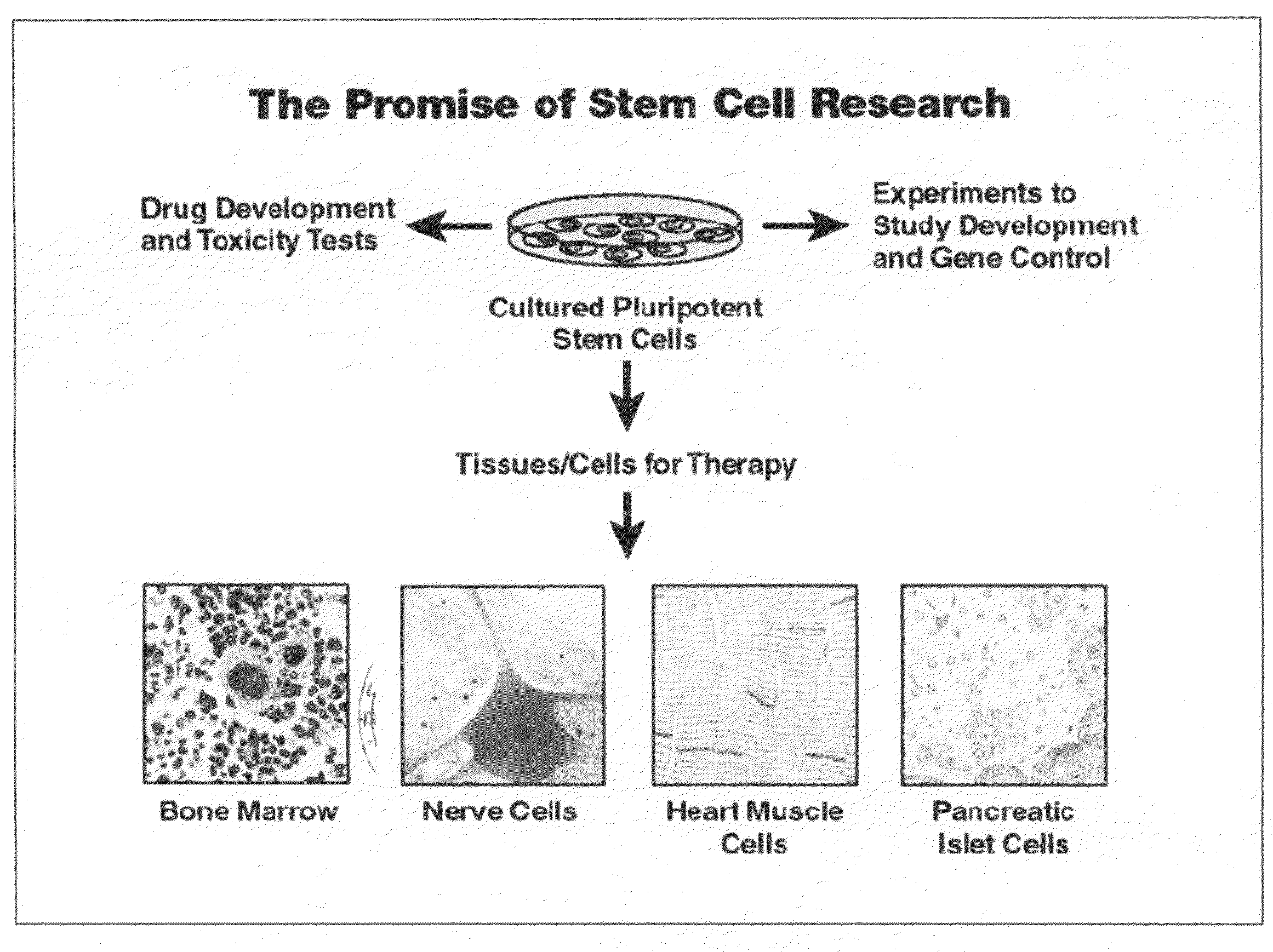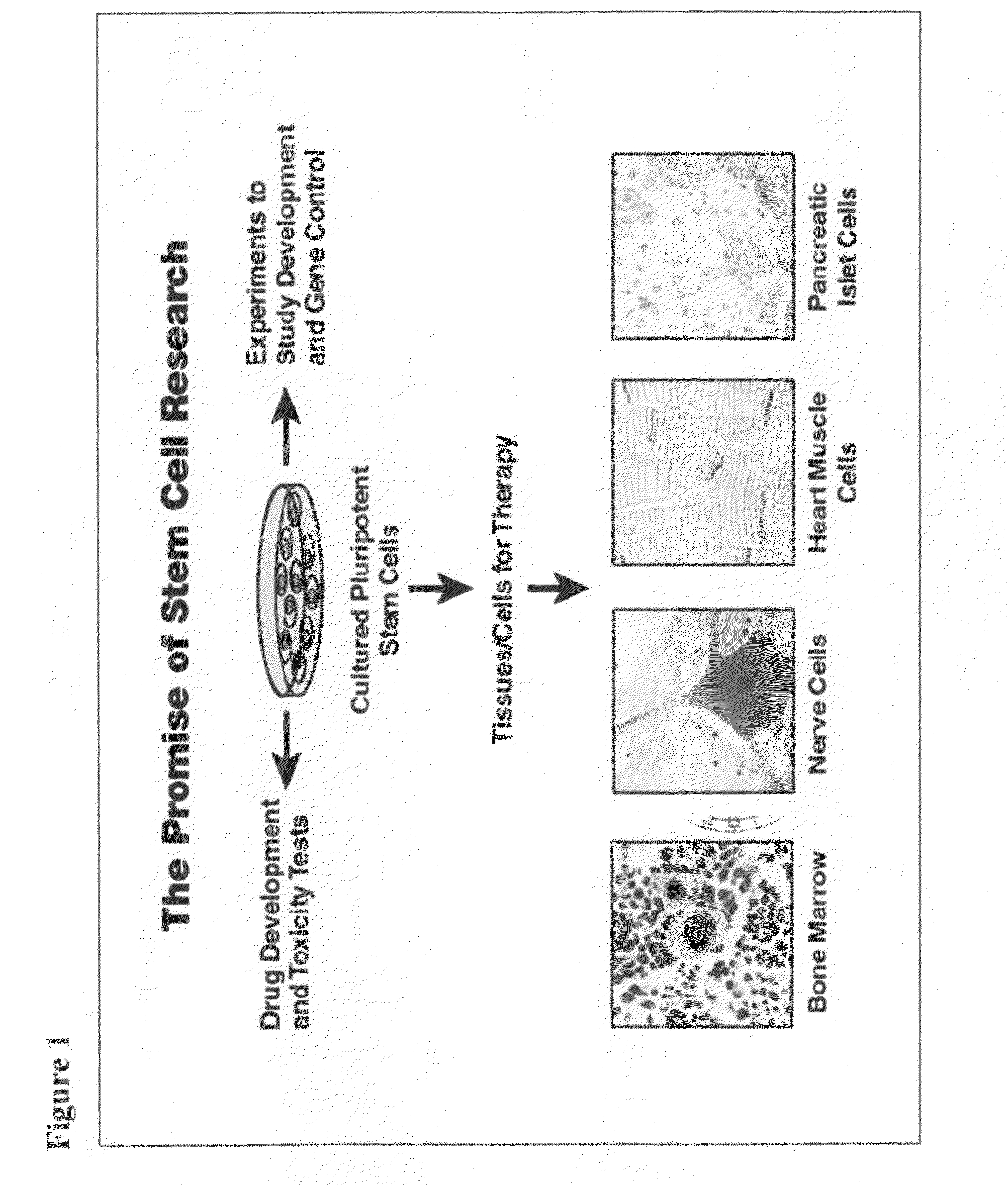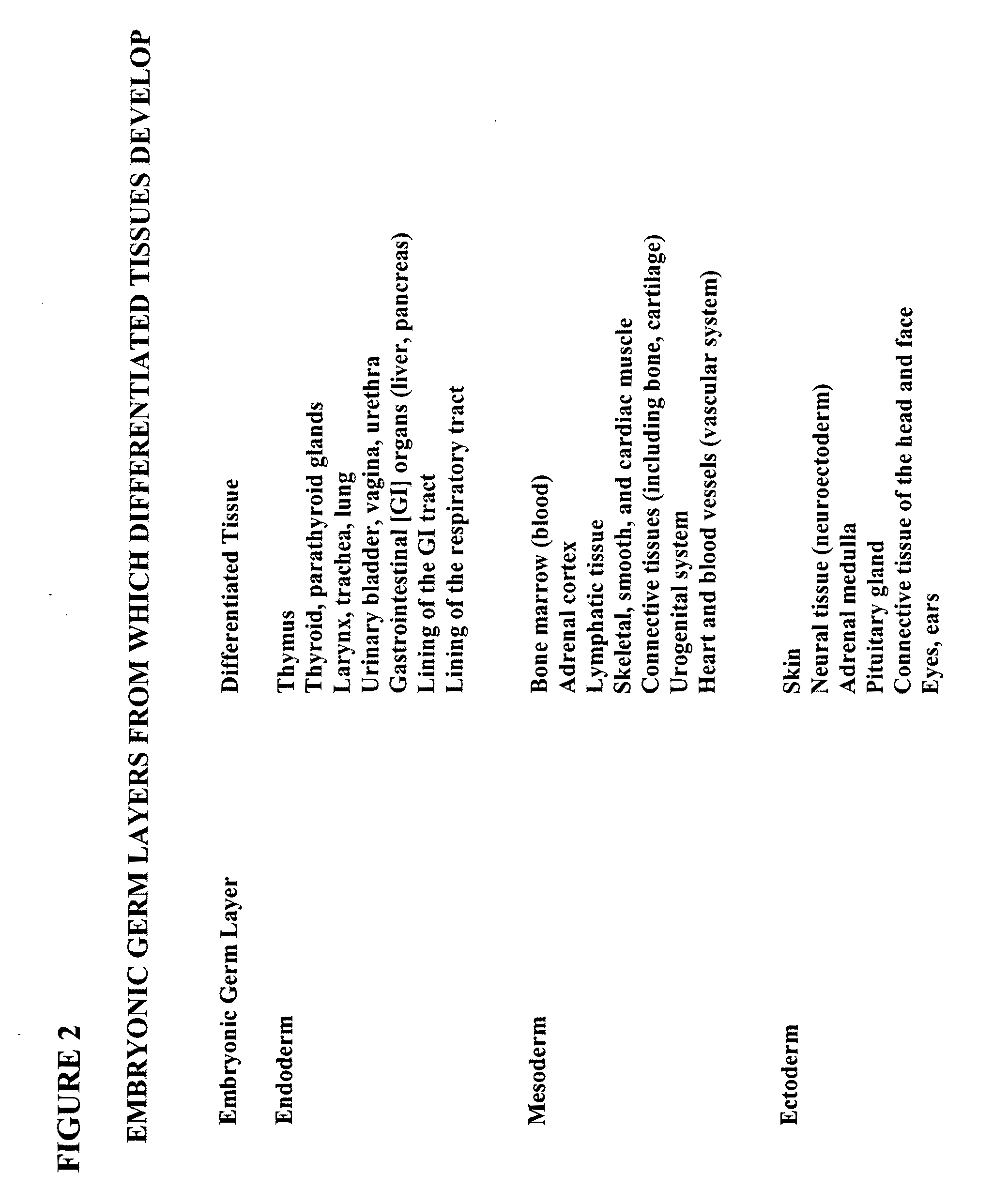Adult stem cells, molecular signatures, and applications in the evaluation, diagnosis, and therapy of mammalian conditions
a stem cell and molecular signature technology, applied in the field of cell biology, can solve the problems of insufficient monolithic marker, insufficient individual growth factor, signaling molecule, etc., and achieve the effect of reducing the amount of mir gene produ
- Summary
- Abstract
- Description
- Claims
- Application Information
AI Technical Summary
Benefits of technology
Problems solved by technology
Method used
Image
Examples
example 1
Identification of the Adult Stem Cell Marker Profile: Determination of the Sternness of the Adult Stem Cells
[0119]Immuno-histochemistry (IHC) and fluorescence-immunohistochemistry (FIHC) was used to profile a suspected adult stem cell source derived from the primordial mesenchymal bulb of the 3rd molar region of both the upper and lower jaw. The IHC and FIHC of the prospected stem cells were contrasted with normal anatomical counterparts from this same region that were differentiated. The profile was based on the consensus profile of human embryonic stem cells (FIG. 4 and from the group Oct-3 / 4, SSEA1, SSEA3, SSEA4, Tra-1-60, TRA-1-81, SOX2, NANOG, CD44, CD34, CD9, CD133, CD117, CD4, CD8, MART, and CD24).
Materials and Methods.
[0120]Tissue Procurement—The stem cell samples analyzed were obtained from seven peripubertal humans, three females and four males, ranging in ages from 13-18 years old. These patients were undergoing voluntary prophylactic removal of this tissue and this tissu...
example 2
Identification of the MicroRNA Signature that Discriminates Adult Stem Cells from their Anatomically Correct Differentiated Counterpart
[0125]Microarray analysis is a relatively new and powerful tool to discern expression profiles, and levels of expression of multiple, in this case, 573 known miRs simultaneously along with the proper controls tissues. This provides high reliability and diminishes noise levels between assays as well as provides for an extremely low standard deviation between samples, within treatments, and between different time points. The microarray chips utilized in the analysis represent the largest single chip array available in the world today. This chip is a custom production available to few persons at this time and thus, the results of our analysis provide the single greatest comprehension of stem cell signature composites in the world. The end reliability of this signature derived from this analysis is thus extremely high and provides for potential remarkabl...
example 3
Identification of the MicroRNA Signature that Discriminates Adult Stem Cells from the Normal Tissues of Trachea, Kidney, Liver, Colon, Small Intestine, Pancreas, Stomach, Esophagus, Bladder, Prostate, Thyroid, Heart, Skeletal Muscle, Testes, Cervix, Ovary, Uterus, Breast, Thymus, Lung, Spleen, Adipose tissue, Lymph Node, Brain, Adrenal, and Placenta
[0130]We applied microarray analysis to discern expression profiles, and levels of expression of multiple, in this case, 573 known human miRs, simultaneously, along with the proper controls tissues, to a contrast with 27 different differentiated tissues. The microarray chips utilized in the analysis represent the largest single chip array available in the world today. Interchip controls were used to provide for between chip variances. These chips are custom productions available to few persons at this time and thus, the results of our analysis provide the single greatest comprehension of stem cell signature composites in the world. The en...
PUM
| Property | Measurement | Unit |
|---|---|---|
| mass | aaaaa | aaaaa |
| volume | aaaaa | aaaaa |
| weight | aaaaa | aaaaa |
Abstract
Description
Claims
Application Information
 Login to View More
Login to View More - R&D
- Intellectual Property
- Life Sciences
- Materials
- Tech Scout
- Unparalleled Data Quality
- Higher Quality Content
- 60% Fewer Hallucinations
Browse by: Latest US Patents, China's latest patents, Technical Efficacy Thesaurus, Application Domain, Technology Topic, Popular Technical Reports.
© 2025 PatSnap. All rights reserved.Legal|Privacy policy|Modern Slavery Act Transparency Statement|Sitemap|About US| Contact US: help@patsnap.com



